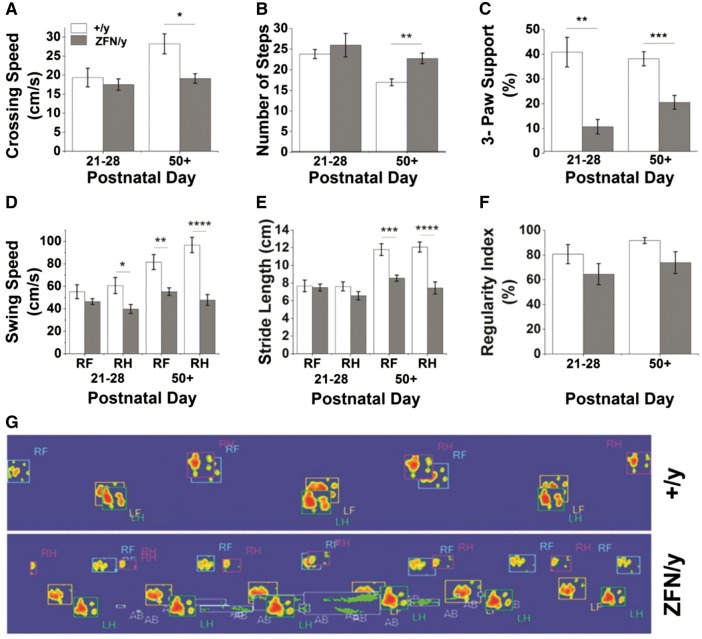Figure 6.
Mecp2ZFN/y males display motor abnormalities upon CatwalkTM testing as early as PND 21. (A–B) Mecp2ZFN/y males cross the runway slower (A) and with a greater number of steps (B) than WTs. (C) Mecp2ZFN/y males show differences in 3-paw support type at PND 21–28 and PND 50+. (D–E) Right hind swing speed was significantly decreased in Mecp2ZFN/y males at PND 21–28, and right front and right hind swing speed (D), as well as right front and right hind stride length (E) were significantly decreased at PND 50+. (F) No significant differences were seen in regularity of step pattern between Mecp2ZFN/y males and WTs. (G) Representative image of footsteps of WT (top) and Mecp2ZFN/y male (bottom) rats as they cross the CatwalkTM at PND 50+; R/L F/H = right/left front/hind, AB = abdomen. (PND 21–28 WT n = 10 Mecp2ZFN/y n = 10; PND 50+ WT n = 12 Mecp2ZFN/y n = 14). Data are presented as mean ± SE, with asterisks representing significant differences (*P < 0.05, **P < 0.01, ***P < 0.001, ****P < 0.0001).

